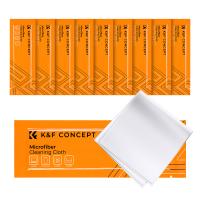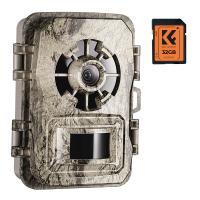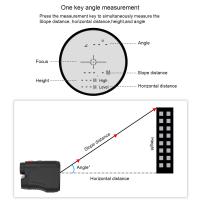What Does Salt Look Like Under A Microscope ?
Salt crystals under a microscope appear as small, transparent, and cubic-shaped particles. The edges of the cubes are slightly rounded, and the surfaces are smooth. When viewed under polarized light, salt crystals exhibit birefringence, which means that they split light into two rays that travel at different speeds. This property causes the crystals to appear colorful and iridescent. The size of salt crystals can vary depending on the method of crystallization and the purity of the salt. In general, larger crystals are formed when the salt solution is allowed to evaporate slowly, while smaller crystals are produced when the solution is rapidly cooled or agitated. Salt crystals are commonly used in scientific research and industrial processes, such as in the production of chemicals, pharmaceuticals, and food products.
1、 Crystal structure of salt
Crystal structure of salt is a well-studied topic in the field of crystallography. Salt, also known as sodium chloride, has a cubic crystal structure. When viewed under a microscope, salt crystals appear as small, transparent cubes with flat surfaces and sharp edges. The size of the crystals can vary depending on the conditions under which they were formed.
Recent studies have shown that the crystal structure of salt is not as simple as previously thought. It was believed that the sodium and chloride ions in salt crystals were arranged in a regular pattern, but new research has revealed that the structure is more complex. The ions are arranged in a way that creates a series of channels and voids within the crystal lattice. These channels and voids allow for the movement of water and other molecules through the crystal structure.
The study of salt crystals under a microscope has also revealed the presence of impurities within the crystal lattice. These impurities can affect the properties of the salt, such as its melting point and solubility. Understanding the crystal structure of salt and its impurities is important for a variety of applications, including the production of salt for food and industrial uses.
In conclusion, salt crystals under a microscope appear as small, transparent cubes with flat surfaces and sharp edges. However, recent research has revealed a more complex crystal structure with channels and voids that allow for the movement of molecules. The study of salt crystals is an ongoing area of research that continues to reveal new insights into the properties and applications of this common compound.

2、 Sodium and chloride ions arrangement
Under a microscope, salt appears as small, cubic crystals with a regular pattern of sodium and chloride ions arranged in a repeating lattice structure. The arrangement of these ions is what gives salt its characteristic properties, such as its solubility in water and its ability to conduct electricity when dissolved.
Recent research has shed new light on the behavior of salt at the molecular level. For example, scientists have discovered that the arrangement of salt ions can change depending on the temperature and pressure of the environment. At high pressures, for instance, the ions may become more tightly packed together, leading to changes in the physical properties of the salt.
Additionally, researchers have found that the behavior of salt can be influenced by the presence of other substances. For example, adding certain chemicals to salt can alter its melting point or make it more or less soluble in water.
Overall, the microscopic structure of salt is a fascinating area of study that continues to yield new insights into the behavior of this ubiquitous substance. Whether you're cooking with it in the kitchen or studying it in the lab, understanding the molecular structure of salt is essential for unlocking its many uses and applications.

3、 Cubic shape of salt crystals
Salt, also known as sodium chloride, is a common mineral that is found in many parts of the world. When viewed under a microscope, salt crystals appear as small, cubic-shaped structures. These structures are formed as a result of the way that the sodium and chloride ions bond together.
The cubic shape of salt crystals is due to the arrangement of the sodium and chloride ions in a regular pattern. Each ion is surrounded by six other ions, forming a cube-like structure. This regular arrangement gives salt crystals their characteristic shape and allows them to stack together in a regular pattern.
Recent studies have shown that the shape of salt crystals can be influenced by a number of factors, including temperature, pressure, and the presence of impurities. For example, when salt is dissolved in water and then allowed to evaporate, the resulting crystals may have a different shape than those formed from a dry salt sample.
In addition to their unique shape, salt crystals also have a number of interesting properties. For example, they are highly soluble in water and can be used to create a variety of different solutions. They are also used in a variety of industrial processes, including the production of chlorine and other chemicals.
Overall, the cubic shape of salt crystals is a fascinating example of the way that minerals can form complex structures at the microscopic level. As our understanding of these structures continues to evolve, we may discover new applications for salt and other minerals in a variety of different fields.

4、 Surface features of salt crystals
Salt crystals are fascinating to observe under a microscope. The surface features of salt crystals are intricate and unique, with a variety of shapes and sizes. When viewed under a microscope, salt crystals appear as small, angular, and transparent cubes. These cubes are formed due to the arrangement of sodium and chloride ions in a repeating pattern.
The latest point of view on the surface features of salt crystals is that they are not just simple cubes. Recent research has shown that salt crystals can have a variety of shapes, including hexagonal, rhombic, and tetragonal. These shapes are determined by the conditions under which the crystals are formed, such as temperature, pressure, and the presence of impurities.
In addition to their shape, the surface features of salt crystals can also vary in texture and color. Some salt crystals have a smooth, glassy surface, while others have a rough, textured surface. The color of salt crystals can range from pure white to shades of pink, blue, and green, depending on the presence of impurities.
Overall, the surface features of salt crystals are complex and fascinating, and continue to be an area of research and discovery in the field of crystallography.





























There are no comments for this blog.